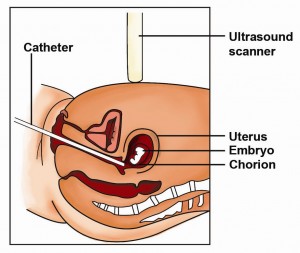
Picture 1: Showing a transcervical CVS procedure being performed
What is Chorionic Villus Sampling (CVS)?
Chorionic villus sampling, or CVS is a diagnostic procedure to detect chromosomal abnormalities and other inherited diseases. This procedure involves taking some tissues from the placenta (the after birth) at the point it attaches to the womb to check for the genetic make-up of the baby.
How is Chorionic Villus Sampling done?
This procedure is done either transabdominal (through your tummy) or transcervical (through the neck of the womb).
Transabdominal: An ultrasound scan is done to guide the insertion of long thin needle through your tummy to the placenta site. The placenta tissue is aspirated into a syringe attached to the needle.
Transcervical: An ultrasound scan is done through the tummy to guide the insertion of a thin catheter through the neck of the womb to the placenta. The placenta tissue is gently sucked into the catheter.
The choice of a transabdominal or transcervical approach should be dependent on how comfortable the person performing the procedure is on the approach, the site of the placenta and whether the womb is tilted forward or backward. A transcervical approach is associated with less discomfort but is associated with higher risk of infection.
The CVS procedure collects a larger sample compared to amniocentesis and the result is usually available within 24-48 hours.
When is chorionic villus sampling performed?
This procedure is usually performed between 10-13 weeks of gestation. It may be offered if your first trimester screening test showed that you are at high risk of having a baby with Down syndrome or if you or your partner has a family history or previous history of baby with chromosomal or genetic disorder.
What is the purpose of the chorionic villus sampling test?
This test is performed to detect chromosomal abnormalities such as Down syndrome and genetic disorders such as cystic fibrosis. However, it does not test for neural tube defects.
What do the result of the chorionic villus sampling tells me about my pregnancy?
The test helps to detect chromosomal abnormalities and genetic problems of your baby. The accuracy is 98-99%. There is 1-2% possibility that the result may be falsely positive whereby the test indicates that the baby is abnormal but it actually does not have any abnormality. This is because sometimes the genetic make-up of the placenta may not be representative of the genetic make-up of the baby.
What are the risk of this procedure to me and my baby?
Although most of the time this test is safe, it is still considered an invasive procedure. There is a 1% risk of miscarriage associated with this procedure.
This procedure can be associated with infection and risk of transmission of diseases to the baby. Therefore it is not recommended for those mothers with HIV, Hepatitis B or sexually transmitted infections. There is also a risk of premature delivery and prelabour leaking of amniotic fluid. Some woman may experience cramping and pain at the puncture site. Some experiences spotting. However, if you develop fever, chills, severe abdominal pain or leaking of amniotic fluid after the procedure, you must contact your healthcare provider immediately.
Should I take this test or not?
The decision to take this test or not depends on your view on your pregnancy and what you are going to do in the event of an abnormal result.
The good thing about having this test is that it provides you opportunity to pursue potential intervention that may exist should the result came back as abnormal. It may also help you to plan your life for looking after a child with special needs, identify resources and support group which can help you throughout your pregnancy and looking after your child after the delivery.
Some couples may choose not to pursue the test due to various reasons. Some couples are comfortable with the outcome of the pregnancy no matter what the result is. Some couples are worry about the risk of miscarriage and the risk of harming the developing baby. Some choose not to take the test because of personal, moral or religious reasons.
Therefore, it is important that you discuss the risk and benefits of the test thoroughly with your healthcare provider. The decision whether to take this test or not depends on whether the benefits outweigh the risks from the procedure.
Filed under First Trimester | No Comments
 Empowering Pregnancy Webinar 2021
Empowering Pregnancy Webinar 2021 Empowering Pregnancy Webinar 2021
Empowering Pregnancy Webinar 2021 Announcing Our Newest Edition of Fertility Book: Catching My Baby Dust
Announcing Our Newest Edition of Fertility Book: Catching My Baby Dust Second Edition of My Precious Tots
Second Edition of My Precious Tots
 My Precious Thots 3
My Precious Thots 3

